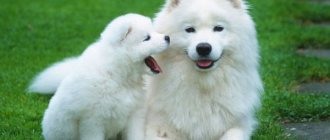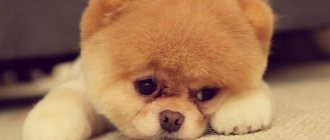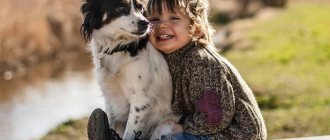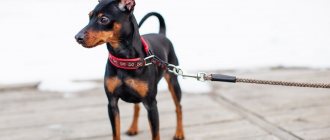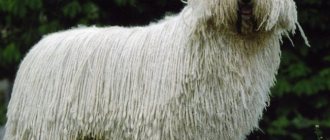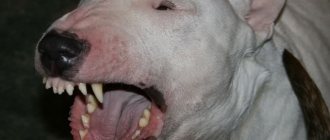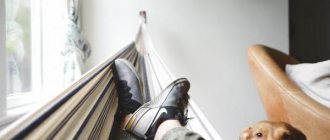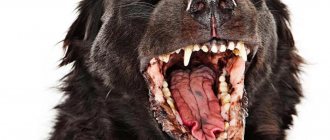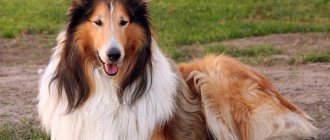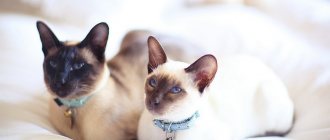- Dog breeds
The German Pinscher is a muscular, agile, powerful and at the same time graceful dog. As the name suggests, this breed originated in Germany. The German Pinscher is a working dog breed and a wonderful companion. A very energetic and active dog that requires exercise. A house with a yard for running would be ideal.
- Country of origin : Germany
- Height at withers : 45-50 cm
- Weight : 14-20 kg
- Lifespan : 12-14 years
- Use : companion dog, watchman, rat catcher
- Other names : standard pinscher
History of the breed
Originally bred to kill rats, the German Pinscher originated in Germany sometime between the late 1700s and late 1800s. There is no clear evidence of when exactly they were bred, but a painting dating from around 1780 shows a dog similar in appearance to the German Pinscher.
The German Pinscher became the progenitor of many breeds, including the Doberman Pinscher and Miniature Pinscher, Rottweiler and Doberman. During the world wars, the German Pinscher was close to extinction. Two colors of the breed have actually become extinct: pure black and salt and pepper. After World War II, Werner Jung began breeding German Pinschers and saved the breed.
Appearance according to standard
German Spitz (small): description of the breed, character
German Pinschers are smooth-haired dogs with an athletic build and strong paws. The average pinscher has an elongated head on a strong, high neck. The weight of an adult dog reaches 18 kg with a height of up to 50 centimeters.
Features of the standard:
- the coat is short and shines in the sun;
- skull – strong, elongated;
- lips and nose are black;
- eyes – dark, oval-shaped;
- tail – saber-shaped, can be docked;
- jaw – medium size with a scissor bite;
- the back is wide, level, strong, does not sag;
- ears – have the shape of a triangle hanging on cartilage, they can be cropped.
Appearance according to standard
Color - red, red, black with bright, clearly defined tan marks in strictly defined places: cheekbones, eyebrows, neck, chest, under the tail and on the inside of the thigh.
Pinschers have no undercoat, they hardly shed, which makes the pet ideal for living in an apartment or house and simplifies its care.
Important! In the summer, the dog can be outside, but with the onset of cold weather it must be moved to a warm room to live.
German Pinscher: features of the breed
- It is not recommended to bring a German Pinscher into a home with small children under nine years of age.
- As a working breed, they need daily walks and exercise.
- A German Pinscher can easily live in an apartment if it is walked at least twice a day. However, they are best suited for a home with a fenced yard.
- They have a strong hunting instinct and will chase anything they see fit to chase. They must be kept on a leash.
- The German Pinscher is a brave and strong-willed breed and is therefore not suitable for beginners.
- Suspicious of strangers. An excellent watchdog.
- Socialization is required from a very early age to prevent the development of aggressive behavior.
- The German Pinscher loves to jump.
- They bark loudly.
- Daily walks and exercise are required.
Features of character and behavior
The standard describes the Pinscher as a self-confident, energetic dog with strong leadership qualities, lively nature and endurance. The Pinscher has long ceased to be just a working breed. Nowadays dogs are adopted as companions. Thanks to selective breeding, the dogs' temperament has softened, making them ideal pets if well trained.
Advantages
The main breed advantages include:
- Energy, activity, good physical shape;
- Fearlessness, pronounced protective instinct (which makes pets good defenders);
- Balanced, not aggressive towards a person (will never attack first, especially an acquaintance);
- Good intellectual abilities, learning ability;
- The ability to adapt to the character and pace of life of the owner (suitable for older people and families with children).
Flaws
Specific shortcomings can be attributed to individual individuals, because temperament depends not only on heredity, but also on upbringing. The current temperament has several unpleasant aspects that owners have to put up with:
- Jealousy (Pinchers are jealous of their owners; their toys and other things that belong to them will fiercely defend them);
- Intolerance of other pets (they especially do not like cats);
- Pinschers are serious manipulators; if the puppy is not trained, it will establish its own rules in the house;
- Dogs have a strong sense of self-esteem, which is why they are often stubborn.
Care and maintenance
- Not demanding in care.
- Bath as needed.
- Clean your ears every three days.
- Clean your eyes as mucous discharge occurs.
- Dental care. It is enough to examine the teeth and oral cavity of a German Pinscher once a week. As for the care itself, during a thorough examination you should pay attention to: The condition of the gums - if they are red and inflamed, it is recommended to contact a veterinarian who will recommend special medications or remedies;
- Teeth color – ideally, it should remain normal, without plaque (you can clean it yourself) and purulent formations. To maintain teeth in good condition, special bones and toothpastes for dogs can be very useful;
- Dental health – check for loose or broken teeth. Between them there should also be no food residues, the accumulation of which causes the animal to develop an unpleasant odor from the mouth and subsequently rot;
- The presence of tartar - in this case, it is impossible to do without the intervention of a veterinarian and its removal. It should also be noted that an important factor for the health of the German Pinscher - and in particular the teeth - is proper balanced nutrition.
Remember that all dog grooming procedures help to establish a relationship with the dog and train him to be disciplined. Regular checking of your German Pinscher puppy will develop into a kind of obligatory and pleasant communication procedure. If you notice any changes in behavior or find any unexplained sores or redness, contact your veterinarian.
Postoperative period
To avoid suppuration of the surgical wound, it is recommended to treat the stump with antiseptic agents. The suture is usually protected with a bandage. However, the bandage may become wet or fall off when the mother licks the puppies, so it is better to use an adhesive tape instead of a bandage. After a week or several days, if there were no complications, the sutures are removed from the stump.
Bleeding, scar hardening, or wound infection are common complications of the operation. To prevent an abscess, proper and careful care of the stump is necessary.
In case of bleeding, the wound is covered with a tight bandage. The entry of bacteria causes suppuration of the suture. Typically, this type of complication is accompanied by pain, weakness and loss of appetite in the dog. Here you cannot do without the help of a veterinarian. He will rinse and treat the wound, and additionally prescribe medications.
Health
Like any other breed of dog, the German Pinscher is prone to certain diseases:
- hypothyroidism and other autoimmune diseases,
- progressive retinal atrophy,
- kneecap displacement,
- Perthes disease.
Preventive measures to protect your German Pinscher puppy
- To keep your German Pinscher puppy completely safe, you first need to minimize his contact with unfamiliar dogs, especially strays. Therefore, you should not let your dog off the leash, as in this case it will become impossible to control its behavior and communication with other dogs. Since a dog can easily become infected with distemper from simply touching the nose of a sick animal. This disease can be transmitted to a dog through sniffing. Your dog can become infected with trichophytosis from contact with the lichen-affected fur of a sick dog. Naturally, it is impossible to completely exclude a dog’s communication with other dogs, since it must be socialized. Therefore, try to find friends with dog lovers who look after their animals. By adhering to this rule, you can eliminate the risk of pathogen transmission by 80%.
- You should walk your dog in places where there are no landfills. Since garbage very often attracts rodents, which in turn are very often carriers of various infections. Gray rats are especially dangerous because they carry such a serious disease as leptospirosis.
- You should not allow your dog to sniff other people's feces, as they are a source of worms.
- Monitor the well-being of your German Pinscher. Pay attention to even the most minor changes in his behavior. For example, your dog may appear lethargic, lose his appetite, or have a dry nose. Or you may notice that the dog begins to shed, and this has nothing to do with seasonal shedding. If hair loss becomes excessive, this is the first symptom indicating health problems in your pet. And only you can help him. Therefore, it is important to take the dog to the veterinary clinic in time, where the disease can be overcome for sure. In no case should you ignore the symptoms, since advanced infections are much more difficult to treat, and sometimes even impossible. If you start treating your dog, the disease can lead to his death or he will develop serious complications that will affect his hearing, vision, limbs and much more.
Training and education
Successful training of a German Pinscher is possible with the right approach to the matter. Experienced dog breeders will not find it difficult to teach their pet basic commands, but beginners will need the intervention of a specialist. Submitting a dog doesn't always work. The principle of complete submission of the German Pinscher to the owner is an outdated method. This theory was formulated based on observations of packs of wild wolves, but they were kept in captivity and, of course, experienced stress. The stress condition forced wolves to show aggression towards each other, but in the wild they do not show aggression to each other - they live together and interact with each other. You need to perceive yourself as the more experienced and mature member of the pack, who is responsible for guiding the new member (German Pinscher puppy) and teaching him good behavior, as well as correcting him if necessary. It is important to remember that German Pinscher puppies learn a lot on their own. They are very inquisitive, love to explore new territories and, of course, experiment. Puppies tend to repeat actions they enjoy (like playing with a toy). They do not repeat actions that cause them pain (for example, destroying a nest and getting bitten). If your German Pinscher puppy misbehaves, ignore him and praise him when he does the right thing. Reward your puppy for following commands and good behavior. Do not neglect these tips. After all, constantly hearing “you can’t” all day long is unbearable. This is a small child who wants to know everything and get his portion of treats as a reward for not eating your favorite rug, going to the toilet outside, bringing you a ball, and so on.
Set rules and monitor their implementation
It is worth enrolling your German Pinscher puppy in obedience training classes. These classes will allow you to understand exactly what actions will allow you to control your dog’s behavior. You will be able to spend more time with your puppy, establish contact and socialize around other dogs.
Adviсe
- Training a German Pinscher puppy should be done with the help of positive motivation; watch carefully special films about this technique. The Canine Translator film series from National Geographic is suitable.
- If you need to leave your puppy at home alone for 2 hours or more, then ask someone to come to him.
- Be sure to make an appointment with your German Pinscher puppy to see your veterinarian as soon as possible. The doctor will carefully examine him and give him vaccinations that will protect him from dangerous diseases.
Key points in training
The breed is completely human-oriented, which means that even a teenager can cope with training a Pinscher. These dogs are very smart, quickly understand commands and respond to them. But in order to achieve complete mutual understanding, you need to start training from early childhood. Literally from the first minutes of his appearance in the house, the pinscher must understand that the person is in charge.
Experts do not recommend taking German Standard and Miniature Pinschers as working dogs. Indeed, now the breed is used as a companion dog. If a family needs a security guard, then it is better to consider the Doberman option, although Zwerg can handle protecting the apartment.
These dogs are considered talented manipulators, so only a strong, strict person can get along with them. The best training method is motivational. It is important to set priorities correctly and reward your pet with affection and treats in a timely manner.
From the first days, the puppy must understand that the owner is strict and adamant. We must not allow the child to play with household items, sleep in the same bed with them, or beg.
Read about how to properly train a dog in the article: “Training a puppy: effective methods from dog handlers, learning commands at home.”
Attitude towards children and pets
The German Pinscher is loyal to all family members if it is properly trained and socialized. Always supervise any interactions between dogs and small children. Teach your child never to approach any dog while it is sleeping or eating, or to try to take food from it. No dog should be left unattended with a child.
The German Pinscher is loyal to dogs and cats if they were raised together and raised correctly. They have a strong hunting instinct, so even a well-trained dog may not be able to resist chasing small pets.
If you decide to get a dog, especially a puppy, then get ready for the following: you will often have to clean up little mistakes after the puppy; investments will be required in annual vaccinations, feeding, toys, ammunition, etc.; Any animal requires attention and communication, so if you don’t have time, then there will be no mutual understanding with your German Pinscher puppy. Big changes are coming in your life. If you can handle this, you will find a loyal friend for life.
Nutrition
Proper nutrition is a basic component of the health and longevity of a pet. The diet is formed taking into account all the individual characteristics of the animal: gender, age, weight, health, level of physical activity and even seasonal temperature changes in the region of residence.
Most often, modern dog breeders choose industrial ready-made food purchased in pet stores and veterinary pharmacies.
Ready-made dry food and canned food are perfectly balanced and supplemented with all the necessary elements. Experienced breeders warn novice owners of Nempins against using low-quality feed from manufacturers with a low reputation. Products below the premium class lead to an upset stomach and digestive problems for your pet.
If you have free time and the necessary skills, you can choose a “natural” form of food basket. When creating a menu “a la naturel”, you need to take into account a lot of factors:
- balance of fats, proteins and carbohydrates;
- calorie content and its correspondence to the dog’s physical activity;
- Pinschers' need for fiber;
- the presence of vitamins and mineral supplements in the diet.
Without extensive experience in keeping German medium pinschers , planning a diet is a non-trivial task.
Proper nutrition for a dog is based on meat, cereals and vegetables. Low-fat fermented milk products will be a pleasant and very healthy addition.
German pinschers are unpretentious and not picky when it comes to food: the choice between ready-made food and a “natural” menu depends only on the desire of the owner.
Any variations are acceptable if the highest quality components are used. Dry food “for active, small dogs” is well suited for a standard pinscher
